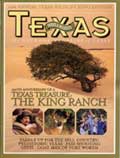
¡Hasta La Vista, Murceélagos!
By Elaine Acker
A major Texas tourist attraction heads to Mexico with the first cold front.
A major Texas tourist attraction heads to Mexico with the first cold front.
Texas is home to 32 of the 45 bat species found in the United States, but by far the most numerous are Mexican free-tailed bats, Tadarida brasiliensis. Approximately 100 million bats of this species live in Central Texas from April through October, patrolling the night skies, dining on pesky insects (including mosquitoes) and congregating to form some of the world’s largest bat colonies.
Austin’s Congress Avenue Bridge, one of the most popular ecotourism sites in the state, is home to the world’s largest urban bat colony, with a population of 1.5 million. Every year, more than 100,000 people from around the world visit the bridge at dusk to witness the bats emerging from the crevices beneath it.
Almost all of the bat colonies in Texas are maternal colonies, consisting of mothers and their young. After mating in Mexico, most of the males stay behind in bachelor caves while the females migrate to Texas. In late June the female gives birth to a single pup and nurses it, as do all other mammals. At birth the pups are one-third of their adult weight. They gain weight rapidly and in August, at six weeks of age, the pups make their perilous first flights and learn to feed on their own. In October, they will make their first long-distance migration.
The world’s largest bat colony lives at Bracken Cave near San Antonio. Owned by Bat Conservation International, the cave houses 20 million bats that surge from beneath the earth in a thick cloud. “It’s a once-in-a-lifetime experience,” says Nicole Daspit, who takes groups of visitors to the site. “When the bats start to emerge, the group gets very quiet. All you can hear is the soft sound of wings. Imagine being surrounded by millions of butterflies. It’s that beautiful.”
The Texas Parks and Wildlife Department offers bat-watching at abandoned railroad tunnels and caves, and still others are located on private property. Bats are a major line of defense against agricultural pests, and are good both for the environment and the economy. But they won’t be here much longer. When the first cool fronts blow through in October, the bats take advantage of the tailwinds and migrate back to caves in northern Mexico. So it’s not too late to see them this month and say ¡Hasta la vista!
Bat Watching in Texas
Bracken Cave, San Antonio: World’s largest bat colony, with 20 million bats. Viewing for members of Bat Conservation International only, June-September. To join, call (512) 327-9721 or go to www.batcon.org.
Congress Avenue Bridge, Austin: Located about a mile south of the State Capitol. World’s largest urban colony with 1.5 million bats. Austin American-Statesman’s observation area is at the southeast corner of the bridge. Contact Bat Conservation International, (512) 327-9721, www.batcon.org.
Eckert James River Bat Cave, Mason: Jointly managed by The Nature Conservancy of Texas and Bat Conservation International, the cave is home to approximately 6 million bats. Tours are available from 6 p.m. to 9 p.m. Thursday through Sunday, mid-May through mid-October. Group tours available by appointment. Free admission. (325) 347-5970 or visit The Nature Conservancy’s Web site: http://nature.org. Click on “Where We Work,” then on “United States,” then on “Texas.”
Frio Cave, Concan: State’s second-largest colony, with 10 million to 12 million bats. Guided tours from March to September. Group tours for 20 or more by appointment. $10 for adults, $5 for children under 13. Contact Bill Cofer at (830) 988-2864, or bpcofer0420@ yahoo.com or Bain Walker at (830) 966-2320.
Texas Parks and Wildlife Department
TPWD hosts four bat-watching sites. Contact the parks for details. Hours, fees and restrictions vary.
Clarity Tunnel, Caprock Canyons State Park, Silverton, (806) 455-1492, www.texas.gov/state-parks/caprock-canyons
Devil’s Sinkhole, Devil’s Sinkhole State Natural Area, Rocksprings, (830) 683-2287, tpwd.texas.gov/state-parks/devils-sinkhole.
Old Tunnel Wildlife Management Area, Sisterdale, (830) 238-4487 or LBJ State Historical Park, (830) 644-2252, or www.tpwd.texas.gov/huntwild/hunt/wma/find_a_wma/list/?id=17.
Stuart Bat Cave, Kickapoo Cavern State Park, Brackettville, (830) 563-2342, or www.tpwd.texas.gov/state-parks/kickapoo-cavern.

